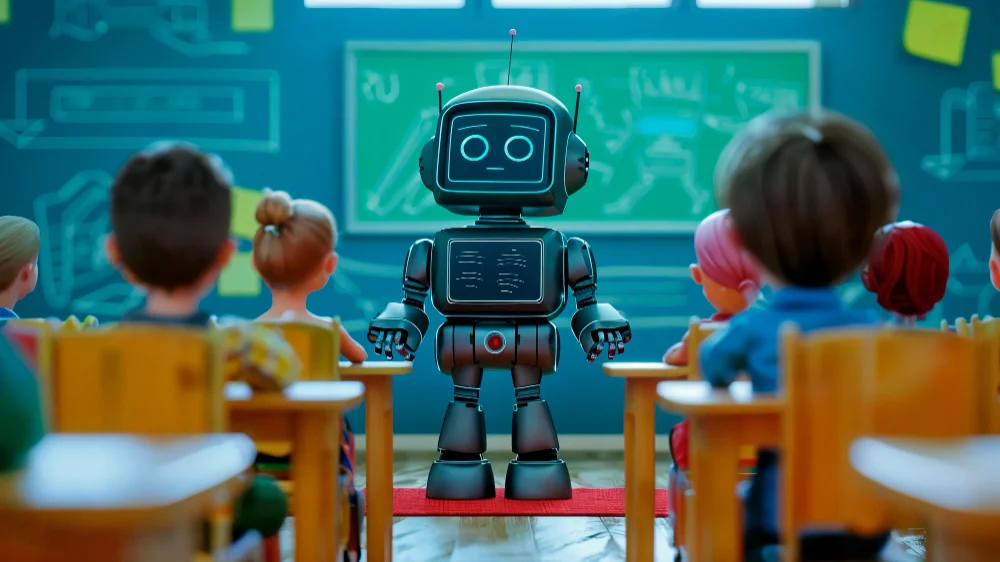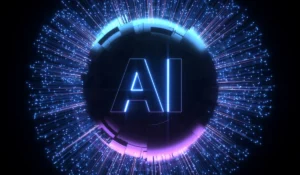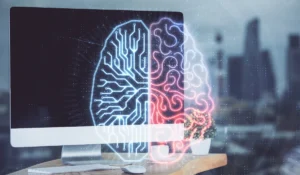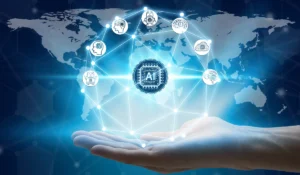Artificial Intelligence (AI) is transforming education globally. Its use in schools is gaining momentum, offering innovative ways to teach and learn. Understanding AI in Schools Pros and Cons helps educators balance its benefits and challenges effectively.
Understanding AI in Education
AI in schools refers to software and systems that can mimic human intelligence. These systems can learn from data, adapt to student behavior, and provide personalized learning experiences. AI applications include intelligent tutoring systems, automated grading, learning analytics, and virtual teaching assistants.
Using AI in schools helps educators manage workloads efficiently, while students benefit from tailored support and real-time feedback. It’s important to examine both the benefits and the potential drawbacks to make informed decisions.
Advantages of AI in Schools

1. Personalized Learning for Every Student
AI can adapt lessons and exercises to match each student’s learning pace and style. Instead of one-size-fits-all instruction, students get content that meets their specific needs. For example, slow learners can get extra practice, while advanced students can move ahead without waiting for the class. This makes learning more engaging and effective.
2. Efficient Administrative Tasks
Teachers often spend hours on grading, attendance tracking, and scheduling. AI can automate these repetitive tasks, saving time and reducing errors. With AI handling these responsibilities, teachers can focus more on creative teaching, mentoring, and student interaction, improving overall classroom productivity.
3.AI in Schools: Immediate Feedback & Support
AI-powered tools provide real-time feedback on assignments and quizzes. This allows students to understand mistakes instantly and correct them before they become habits. Immediate feedback helps in reinforcing concepts, keeping students motivated, and promoting a self-paced learning environment.
4. Supporting Students with Special Needs
AI tools can make classrooms more inclusive. For instance, speech-to-text software assists students with writing difficulties, and language translation tools help non-native speakers follow lessons easily. Adaptive interfaces for visually or hearing-impaired students ensure that every learner has an equal opportunity to succeed.
5. Data-Driven Insights for Educators
AI can process large volumes of student data to highlight trends, strengths, and weaknesses. Educators can use this information to adjust lesson plans, provide targeted interventions, and improve teaching strategies. These insights enable schools to make more informed decisions for better learning outcomes.
Challenges of AI in Schools

1. Over-Reliance on Technology
While AI offers immense support, students may become too dependent on it. Relying on AI for answers and problem-solving can reduce critical thinking and creativity. Students need to balance AI assistance with independent learning and human-guided problem-solving.
2. Data Privacy and Security Concerns
AI systems collect sensitive student information, such as grades, personal data, and learning patterns. Without proper security measures, this data could be vulnerable to breaches or misuse. Schools must ensure strict privacy protocols to protect students and maintain trust.
3.AI in Schools: Equity and Accessibility Challenges
Not all students have equal access to AI-powered educational tools. Those in rural areas or low-income families may lack devices or reliable internet. This digital divide can widen existing educational gaps unless schools provide adequate resources to ensure fairness for all learners.
4. Potential Bias in AI Algorithms
AI learns from existing data, which may contain biases. This can lead to unfair treatment or misrepresentation of certain groups of students. Teachers and administrators need to monitor AI outputs closely and use diverse datasets to reduce bias and maintain fairness.
5. Teacher Training and Adaptation
Implementing AI effectively requires proper teacher training. Educators need guidance on how to integrate AI tools into their teaching strategies. Without sufficient professional development, AI’s potential benefits may not be fully realized, and misuse can lead to classroom inefficiencies.
Best Practices for AI Integration in Schools

Integrating AI into classrooms can be highly beneficial if done thoughtfully. Schools need to adopt strategies that maximize AI’s advantages while minimizing potential drawbacks. Clear guidelines, teacher training, and ethical considerations are essential for successful implementation.
1. Combine AI with Traditional Teaching
-
Use AI as a supplement, not a replacement, for human teaching.
-
Blend AI-driven lessons with interactive classroom discussions.
-
Ensure students still develop critical thinking and problem-solving skills.
2. Ensure Transparency in AI Systems
-
Make AI algorithms explainable to teachers, students, and parents.
-
Allow educators to understand how AI evaluates performance.
-
Build trust in AI tools by openly sharing data usage and decisions.
3. Provide Ongoing Teacher Training
-
Offer professional development programs on AI tools and platforms.
-
Train teachers to interpret AI insights effectively.
-
Encourage continuous learning to keep up with evolving AI technologies.
4. Monitor Data Security and Privacy
-
Implement strict security protocols to protect student information.
-
Regularly review AI systems for vulnerabilities.
-
Educate staff and students about safe data practices.
5. Ensure Equitable Access for All Students
-
Provide devices and internet access to students in need.
-
Make AI-powered resources accessible to all learners.
-
Address the digital divide to prevent educational inequality.
Conclusion: AI in Schools and Its Impact
The integration of AI in schools has enormous potential to enhance education. From personalized learning to efficient administration, AI can revolutionize how students learn and teachers teach. Understanding AI in Schools is essential to address challenges like over-reliance, data privacy, bias, and equity issues effectively.
For instance, AI tools similar to those used in industries like travel can streamline tasks and improve efficiency in educational settings, as seen in AI tools for travel agents, which demonstrates how specialized AI applications can simplify workflows.
By adopting a balanced approach, schools can harness the power of AI responsibly, ensuring that technology complements human teaching rather than replacing it. Understanding both the pros and cons allows educators and policymakers to make informed decisions for the future of education.











